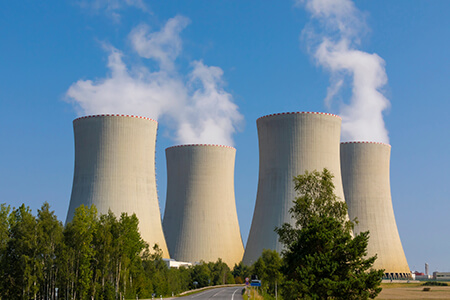This is a lesson summary. The full lesson can be viewed by purchasing an online course subscription.
Learning Objective
In this lesson we will look at the main types of kinetic energy: mechanical kinetic energy, thermal energy, radiant energy, sound energy and electrical kinetic energy.
Learning Outcomes
By the end of this lesson you will be able to:
- Define ‘kinetic energy’.
- Describe mechanical kinetic energy, with examples.
- Describe thermal energy and distinguish it from temperature.
- Describe radiant energy, with examples.
- Describe sound energy and compare it to radiant energy.
- Describe electrical kinetic energy, with examples.
- Describe factors that affect the magnitude of the different types of kinetic energy.

(Image: totojang1977, Adobe Stock)
Lesson Summary
- Kinetic energy refers to any active form of energy.
- Kinetic energy involves movement of whole objects, movement of particles within objects or waves generated by objects.
- Mechanical kinetic energy is energy possessed by objects that are in motion.
- The amount of mechanical kinetic energy an object possesses depends on its speed and its mass.
- Thermal energy (also known as heat or heat energy) is energy that results from the movement of particles in matter.
- The amount of thermal energy possessed by an object depends on the amount of particle movement and the object’s mass.
- When matter is heated, it gains thermal energy; when matter is cooled, it loses thermal energy.
- Thermal energy is a measure of the total amount particle movement, whereas temperature is a measure of the average amount of particle movement.
- Radiant energy is energy in the form of electromagnetic waves.
- It includes radio waves, microwaves, infrared light, visible light, ultraviolet light, X-rays and gamma rays.
- The amount of radiant energy carried by an electromagnetic wave depends on the rate of oscillation (frequency) and the magnitude of oscillation (amplitude).
- Sound energy is energy in the form of a type of mechanical wave.
- Mechanical waves transfer energy by vibrating particles in the medium through which they travel.
- The amount of energy carried by a sound wave depends on the rate of oscillation (pitch) and the magnitude of oscillation (loudness).
- Electrical kinetic energy is energy in the form of electrons moving between atoms.
- It includes electricity flowing through electric circuits and electricity in the form of sparks.
- The magnitude of electrical kinetic energy is related to the rate of electron flow.

(Image: martinlisner, Adobe Stock)
(Header image: Tobias Arhelger, Adobe Stock)
